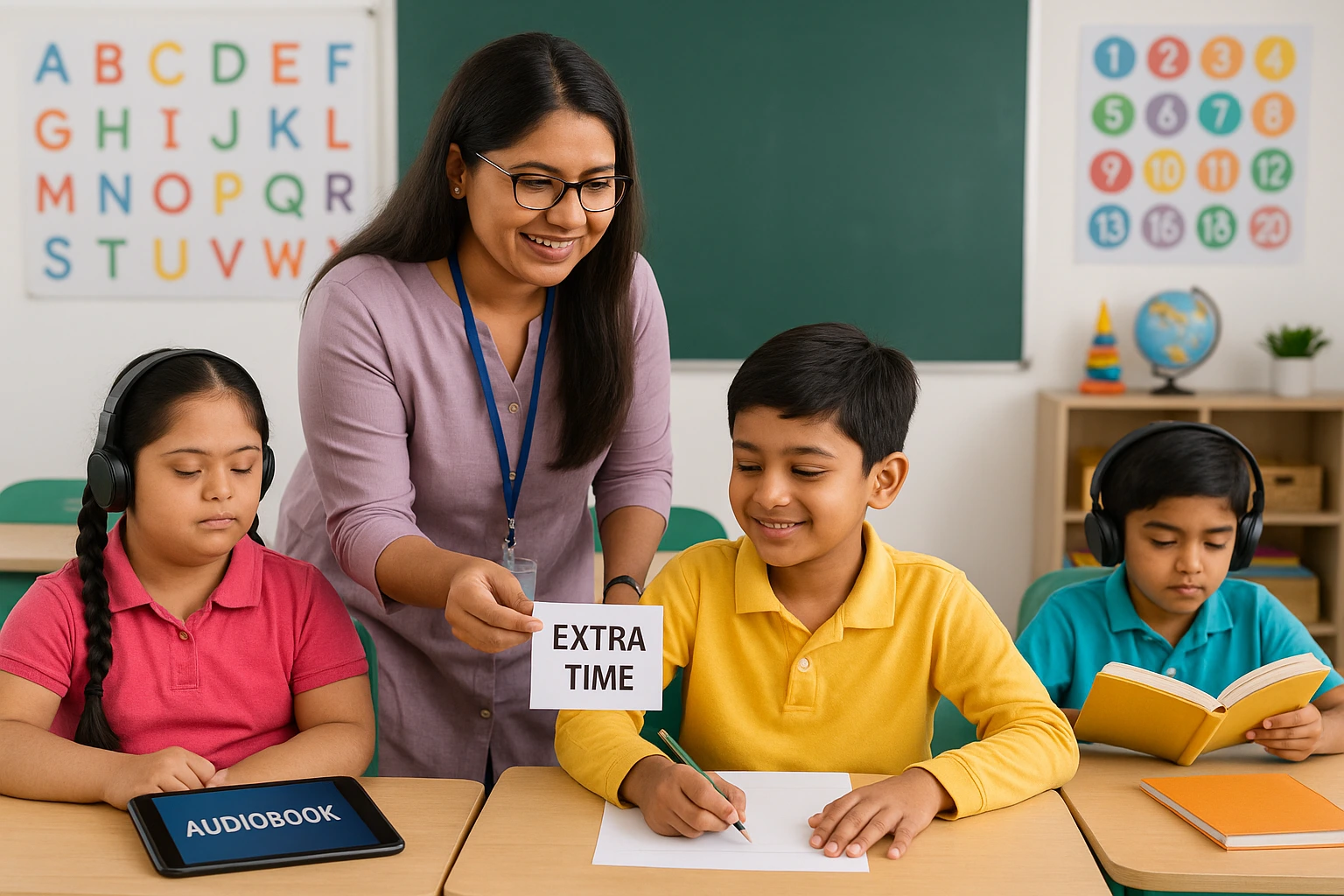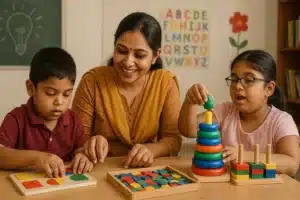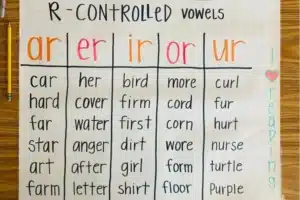
An Individual Education Plan (IEP) assists students with learning challenges by detailing specific educational objectives, pedagogical strategies, and provisions matched to the student’s level of working. Teachers have the most critical responsibility in planning and applying this plan. Individual Education Plan Examples serve as a basis for adapting lessons and assessing and modifying teaching about the child’s strengths and difficulties. Analyzing Individual Education Plan Examples enables educators to appreciate how inclusive pedagogy can be implemented for all children.
How is an IEP Developed?
Building an Individual Education Plan (IEP) is a step-by-step process that ensures every child with special learning needs receives the correct support. The goal is to make a practical and effective plan tailored to the student’s strengths and difficulties.
Here’s how an IEP is typically developed:
Referral and Evaluation
- The process starts when a teacher or parent identifies learning concerns. A formal evaluation is conducted to assess areas such as academic skills, speech, behavior, or physical development.
- Example: A student struggling with reading may be measured by a special educator and a speech-language therapist.
Team Formation
- The IEP team is a collaboration of a strong network of parents, teachers, special educators, and therapists.
- Example: In case of a child with speech difficulty, the team comprises the teacher, occupational therapists, and parents.
Identifying Strengths and Needs
- The team reviews evaluation results to list the student’s current performance levels and areas that need support.
- Example: A child may show strong oral skills but needs help with written expression.
Setting Goals
- Realistic and practical goals as per the child’s capabilities are set. These goals are benchmarks of the child’s achievements and his overall progress.
- Example: “The student will improve reading fluency by 20 words per minute within six months.”
Planning Support and Services
- The IEP has a detailed outline of the precise support the child gets from different sections. E.g., resource room time, speech therapy time, and classroom modifications.
- Example: Extra time for tests or access to audiobooks.
Implementation
- Teachers and staff use the IEP to ensure that the devised classroom strategies are helping the child attain his learning outcomes.
- Example: The class teacher designs worksheets that are based exclusively on the child’s needs as per the IEP.
Review and Updates
- IEPs are assessed periodically at least once a year to see if the IEP is contributing to the child’s progress as per the set goals.
- Example: If the student has shown reasonable progress in reading three-letter words, the IEP can be altered, and higher goals of reading sentences can be set.
The significance of the above process lies in the fact that the child is placed at the center of it, and the IEP is customized to help the student attain their true potential with the help of consistent support and guidance from mentors and professional therapists.
Click here to download the Best LD Course brochure!
For more details of the Best LD Course, Call / WhatsApp on +919321024137 / +919869866277.
Which Students Require an IEP?
An Individual Education Plan (IEP) is devised for children who possess a learning difficulty that has affected their learning skills, due to which the child cannot cope with the pace of the average learner in a regular classroom. In order to understand which students need IEP assessments are conducted to get a formal diagnosis, and accordingly, remediation begins.
Here are the types of students who may require an IEP:
- Students with Learning Disabilities
- Students with Autism Spectrum Disorder (ASD)
- Students with ADHD
- Students with Speech or Language Impairments
- Students with Emotional or Behavioral Disorders
- Students with Physical Disabilities
- Students with Sensory Impairments
The term Individual Education Plan means a plan that is exclusively devised to harmonize with the learning needs of the child. This ensures that the child gets the appropriate resources and aid that guarantee the overall development of the child.

Source: futureeducationmagazine
What are Disabilities and Additional Learning Needs?
Disabilities refer to conditions that affect the child’s functioning and his intellect that preventing him from engaging fruitfully in a mainstream classroom. As the child cannot process the visual information properly, the way they learn is not similar to the average learner of the class, leading to additional learning needs for the child.
Additional Learning Needs are provided accurately by special educators by providing the child with desirable academic aid through multi-sensorial aids, visual teaching techniques, and emotional support that contributes to the holistic development of the child.
Understanding Disabilities
Disabilities can be of various types, such as intellectual, physical, and communication-based. These can either be detected at birth or can be acquired by the child later one.
Common types include:
- Physical Disabilities
- Sensory Impairments
- Intellectual Disabilities
- Autism Spectrum Disorder (ASD
- Speech and Language Disorders
- Mental Health Conditions
Understanding Additional Learning Needs
Additional Learning Needs (ALN) implies the learning disorder the child possesses, due to which their learning style is not as same as that average classmates.
These needs might include:
- Specific Learning Difficulties (SpLD)
- Behavioral Challenges
- Language and Communication Delays
- Medical Conditions Affecting Learning
- Socio-emotional Difficulties
Key Points for Educators
- Every child is unique, and so are their needs. Any analysis of the child cannot demarcate the child’s abilities.
- Recognition of any learning disorder helps to start intervention early.
- Inclusive practices, tailored instruction, and collaboration with specialists support success.
- Incorporating a multitude of teaching techniques helps reinforce the topics for all children, whether they have any learning disability or not.
More than handling the academic challenges of children with disabilities, it is helping the child overcome the trauma that comes along with the disability. Educators should deeply understand the child’s challenges and should devote ample time to help the child accommodate comfortably into a regular classroom, ensuring no child is left behind due to their diverse learning needs.
Click here to download the Best LD Course brochure!
For more details of the Best LD Course, Call / WhatsApp on +919321024137 / +919869866277.

Why is an IEP Important?
An Individual Education Plan Example is the roadmap following which the teachers, special educators, and parents ensure that the child attains his learning goals and progresses on his path to concrete success that ensures him a life to be led with respect and financial independence.
IEP is crucial as it aids constructive action that helps to cater to the learning and emotional needs of the child. The IEP doesn’t just highlight the goals but lays down a systematic approach that assesses the child’s achievement and takes the essential steps if the desired outcomes are not achieved. The IEP is the guide to a child’s overall holistic development, aiding their overall growth. The IEP method can be learned by Learning Disability Course
Targeted Support
The IEP defines particular, measurable outcomes that are linked to the student’s strengths and weaknesses. Achievement of these objectives is facilitated through intermediate milestones to ensure the student’s journey is effortless and clearly defined.
Customized Strategies
It identifies teaching approaches, classroom accommodations, and tools tailored to the student’s condition—whether it’s a physical disability, autism, or a learning disorder.
Progress Monitoring
An IEP has set realistic goals as per the child’s competencies that help teachers to review the progress periodically and make the necessary changes if there is no satisfactory improvement.
Team Collaboration
The IEP is based on the fundamental principle of perfect synchronization between the teachers, educators, and the parents by focusing on concise and clear communication, ensuring all the stakeholders work together to give the child the best aid possible.
Legal Protection
An Individual Education Plan Example also protects the student’s rights under educational laws by guaranteeing access to appropriate resources and modifications.
Vidhyanidhi Education Society (Govt. Regd.) offers Learning Disability Course an eminent teacher training Institute with an adept team of leading professionals, has initiated a top-notch learning disability program that has transformed the dreams of teachers of establishing a flourishing and enriching teaching career into a reality. The Learning Disability Course trains aspiring candidates to learn the significant aspects of various learning disabilities, diagnose the symptoms precisely, and gain knowledge of classroom strategies that aid in supporting the long-term needs of students to make a meaningful difference in the educational journey of children who require additional support.
Join our Best LD Course at Vidhyanidhi Education Society!
Click here to download the Best LD Course brochure!
For more details of the Best LD Course, Call / WhatsApp on +919321024137 / +919869866277.
Individual Education Plan Example for Teachers
FAQs
Can Parents Contribute to IEP Planning?
Parents are significant contributors to the IEP, especially in setting goals, providing regular progress updates, and supporting their child’s specific needs.
Who is Involved in Creating an IEP?
An IEP team includes teachers, special educators, parents, and school psychologists. Vidhyanidhi Education Society offers training on IEP strategies in their Learning Disability Course.
What is an Example of Baseline Data for an IEP?
A baseline could be “Student reads 40 words per minute with 60% accuracy,” which helps set accurate goals and track improvements over time.



